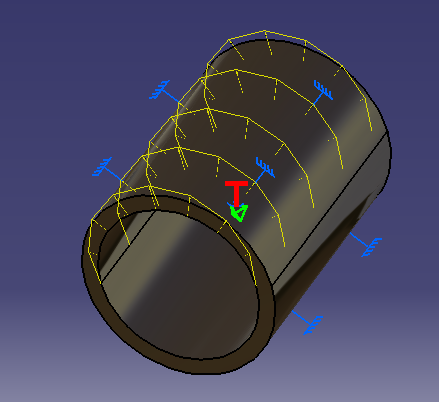
Description:
A piston-connecting rod is a component that translates the reciprocating motion of a piston into rotational motion, facilitating the conversion of linear movement to rotary motion in an internal combustion engine.
Procedure:
I designed a connecting rod-piston assembly using CATIA V5. Then, I carried out a finite element mechanical analysis to verify the supported stresses and the deformations it undergoes due to the usual operation of the engine. In addition, I considered the ambient temperature generated by the motor combustion to analyze it as accurately as possible. The material used has been generic stainless steel.
I defined the necessary contacts, slips and fixed joints between the elements as boundary conditions. Regarding the loads to be supported, I have placed a vertical load on the top of the piston that simulates the force exerted by combustion. I carried out two different analyses, one considering the ambient temperature and one without it, to compare the results and understand how the temperature affects the whole.








Results:
To validate the model after the linear analyses, I verified the Von Mises stresses and the displacements in the nodes that form the model mesh. The results indicate that the stresses don't surpass the limit stresses and that the deformations are not too high. Therefore, the model is valid and fulfils its function.




